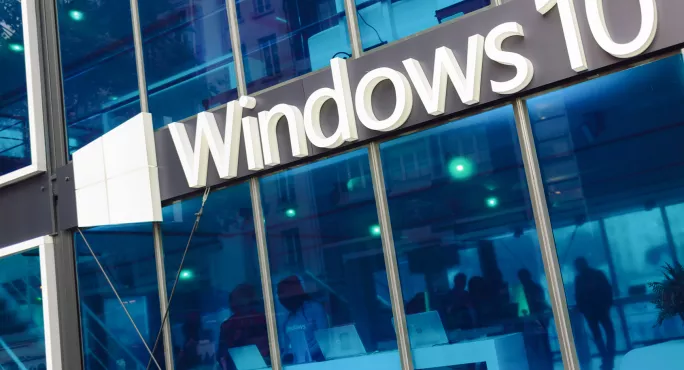How schools should prepare for the move away from Windows 10
Share
How schools should prepare for the move away from Windows 10
From 15 October 2025, Windows 10 will no longer be supported by Microsoft. This means no more security fixes or operational updates unless you pay for extended support.
According to official DfE data, around 93 per cent of secondary schools and 85 per cent of primary schools in England use the Windows 10 operating system - so this is going to affect a lot of schools and trusts.
What’s more, while computers are the obvious thing you think of, the reality is that anything running the Windows 10 OS - such as catering tills, digital signage, CCTV and a multitude of software - will be affected. Frankly, it’s huge.
For many, this will mean upgrading their devices to Windows 11 - a costly endeavour but a necessary one that will take time to get in place. If upgrading isn’t already on your radar, it should be.
What to do with old devices?
However, there will be PCs and laptops that simply won’t run on Windows 11 because they are too old to handle its system requirements.
This is a huge consideration because as schools we hold many different types of sensitive information and personal data, and so need ongoing support - in this case from one of the biggest IT manufacturers - if or when things go wrong.
This means that simply ignoring the deadline and hoping for the best is not an option. As mentioned, there will be the option of extended support but this will only ever be a temporary solution - and a costly one too.
More on edtech:
- How can schools and trusts stay safe from cybersecurity threats?
- Why we built an AI tool to handle parent questions
- Mandatory assistive tech training for all new teachers from 2025
This is why we at the David Ross Education Trust have spent the past two years planning how we would achieve the upgrade across our 37 schools. We are currently about a quarter of the way through the project to become Windows 11 compliant.
This has included a complete refresh of all our hardware that needs updating - something we have managed through effective budgeting to take into account the best total cost-of-ownership model for our trust.
Although financially it is clearly a large outlay, doing nothing could have far worse consequences for IT security, accountability and ensuring our students are cybersafe.
What to do now
For any headteacher or trust leader reading this who is still unsure as to how to proceed, my advice is to get in touch with your IT partner and suppliers to see what support they can offer.
Furthermore, we at DRET are more than happy to offer our expertise to other trusts and schools in terms of what we have done and what we have learned - both in terms of the refresh and rollout but also the budgeting we have done around the project.
Ultimately, when support is withdrawn for a critical IT product, it makes it far easier for cybercriminals to attack devices and access systems. This is something schools and trusts simply cannot afford to happen so work in this area needs to begin as soon as possible.
Ellis Jacklin is IT and data director for the David Ross Education Trust
For the latest education news and analysis delivered every weekday morning, sign up for the Tes Daily newsletter




